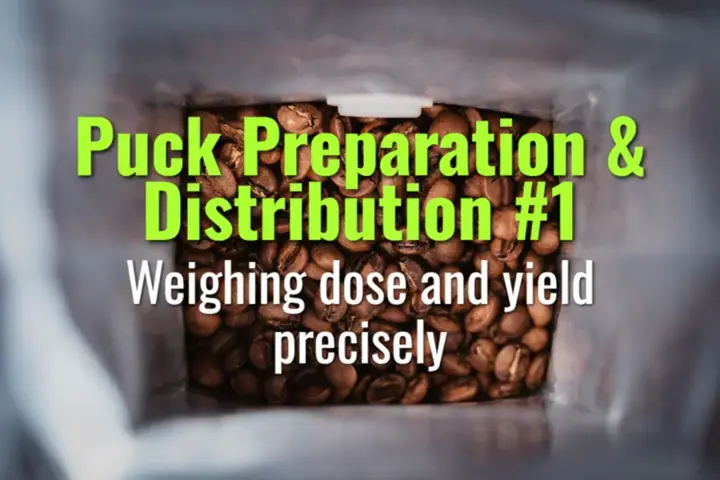Weighing dose and yield precisely
Why precise weighing of both coffee dose and espresso yield is essential for consistency and quality control.
- Coffee Basics Nerds
- 1 min read
Article 1 of 12 in Puck Preparation & Distribution/

Importance of Precision
- Espresso is highly sensitive to small changes in dose and yield.
- Even ±0.2 g variation in dose or ±2 g variation in yield can change flavor balance.
- Weighing ensures repeatability across baristas, shifts, and locations.
Weighing Dose
- Definition: The mass of dry ground coffee placed into the portafilter.
- Target: Usually 16–20 g for a double shot (basket-specific).
- Consistency: Weigh beans before grinding or weigh grounds in the portafilter.
- Best Practices:
- Use a precision scale (0.1 g resolution).
- Keep baskets clean and dry before dosing.
- Standardize workflow: weigh → grind → distribute.
Weighing Yield
- Definition: The beverage weight of liquid espresso in the cup.
- Target Ratios:
- Ristretto ≈ 1:1
- Normale ≈ 1:2
- Lungo ≈ 1:3
- Best Practices:
- Place cup on scale, tare before extraction.
- Stop shot when target yield is reached, not just by time or volume.
- Record dose and yield together for recipe tracking.
Benefits
- Ensures reproducibility of flavor across different baristas.
- Allows accurate adjustments when dialing in.
- Prevents wasted coffee and improves efficiency.
Summary
Weighing both dose and yield precisely is the foundation of consistent espresso brewing. Using a scale every time ensures that recipes are reproducible, quality is maintained, and adjustments are data-driven rather than guesswork.